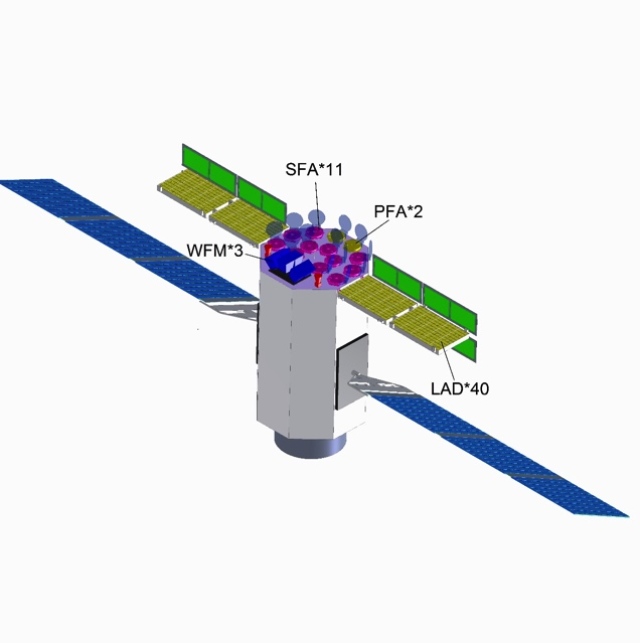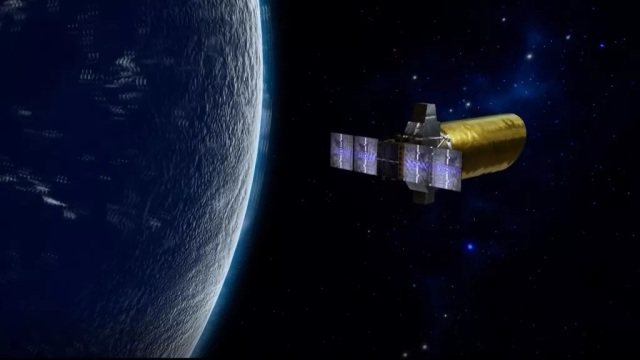The Chinese Academy of Sciences has presented 13 candidates for new space missions in the field of astrophysics, exoplanetology, heliophysics and solar system research. If the projects are approved, they can be created and launched into space in the period from 2025 to 2030. The description of the projects is published in the Chinese Journal of Space Science.
In the last decade, the PRC's space program has been undergoing rapid development: five projects to explore the Moon with automatic vehicles and lunar rovers, during which lunar soil was brought to Earth, a rover was landed on the surface of Mars, still working in tandem with an orbiter, the HXMT space X-ray telescope [...], the GECAM gamma-ray monitor of the entire sky [...], the astrophysical DAMPE Observatory [...], the world's first QUESS quantum communication satellite and the SJ-10 research satellite with 19 experiments on board.
In July 2021, the Chinese Academy of Sciences announced the start of work on the Third Strategic Priority Program for Space Sciences (SPP-III), which covers the period from 2025 to 2030. The staff of the National Space Center of the Chinese Academy of Sciences, headed by Wang Chi, published a list of 13 possible projects that were selected from 17 initial applications and will be implemented upon their final approval under SPP III.
Three projects are presented in the field of astrophysics. The space X-ray telescope eXTP (Enhanced X-ray Timing and Polarimetry Mission), which has become a joint project of China and Europe, can be placed in near-Earth orbit and will study isolated and binary neutron stars, magnetars, black holes of different masses, sources of gravitational wave bursts and astrophysical neutrinos. The DAMPE-2 satellite (DArk Matter Particle Explorer-2) will continue the program for accurate measurements of the energy spectrum of cosmic rays. The DSL (Discovering the Sky at the Longest Wavelength) project involves placing a group of microsatellites in lunar orbit, which will conduct observations in the radio range at frequencies below 30 megahertz, exploring the Milky Way, other galaxies and the early Universe.

Diagram of the device of the X-ray telescope eXTP.
Image Source: ISDC
In the search for exoplanets, two projects are presented that are aimed at increasing the number of known exoplanets and targeted searches for Earth-like exoplanets in the habitable zone of sun-like stars. The Earth 2.0 project involves the creation of a space observatory with seven telescopes to search for exoplanets using transit photometry and gravitational microlensing methods. The CHES (Closeby Habitable Exoplanet Survey) project involves the development of a space telescope that will search for exoplanets using ultra-precise astrometry. Both observatories will be sent to the vicinity of the L2 point in the Sun—Earth system.
Four projects are presented in the field of heliophysics. As part of the SOR (SOlar Ring Mission), it is planned to monitor the Sun and the inner heliosphere using three spacecraft located in orbit, at a distance of one astronomical unit from the Sun and separated by 120 degrees relative to each other. The SPO (Solar Polar-orbit Observatory) can study the poles of the Sun, working in a low-elliptical orbit with a large inclination (more than 80 degrees) relative to the plane of the ecliptic. The ESEO (Earth-occulted Solar Eclipse Observatory), located near the L2 point in the Sun—Earth system, will be able to study the corona of the Sun, whose disk will be covered by the Earth. The CHIME probe (Chinese Heliospheric Interstellar Medium Explorer) can be launched into a heliocentric orbit enclosed between 1 and 3 astronomical units from the Sun and will study the outer part of the heliosphere.
Finally, four projects are presented in the field of Earth and Solar system research. The ASR (E-type Asteroid Sample Return) project, designed for 4 years, involves taking three soil samples from the 1989 ML E-type asteroid and delivering them to Earth. The VOICE (Venus Volcano Imaging and Climate Explorer) orbiter is designed to study the geology and atmosphere of Venus. Two satellites located in low sun-synchronous orbits will study the dynamics of climate change on Earth within the framework of the CACES (Climate and Atmospheric Components Exploring Satellites) project, and the OSCOM satellite (Ocean Surface Current multiscale Observation Mission) will observe the Earth's oceans.
We talked about the details of China's space program in the materials "Questions to the Sky" and "Red Space" .
Alexander Voityuk

